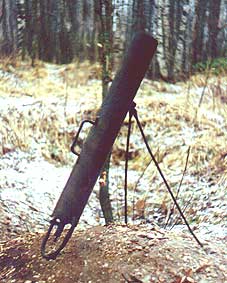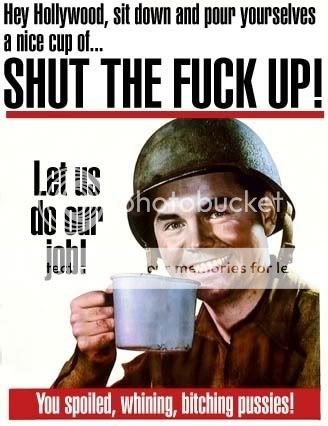Ok you are right, but there are some hatches that are quite thinn. Plus the armor on top is at its maximum 20mm, no match for the 1KG RPG-42. And at Kursk it didn't have any MG they put MG:s on it in Switzerland and it became Elefant. This is what happenes to Elefant after having a greanade tossed inside!!!
http://tank.uw.ru/articles/samohod/ferdinand_a12/gallery/index.khtml#
I can not found any RPG-42, only a RG-42, which is more or less a HE-charge and a RPG-43, which is a HEAT hand grenade, at least from wikipedia.

Though they dont say how effective it was really in penetrating armor sadly.
The only picture in Venom's link of a Ferdinand that was actually trashed had a pop-up over the thumbnail saying it was done by a bomb from a Pe-2.

As regards Jed..Wuk's post, I think the infamous Russian
ampulomet could theoretically be used effectively against light tanks and vehicles. It was, in essence, a kind of mortar that lobbed Molotov cocktails up to 250 metres.
I think the drawbacks of a weapon that tries to shoot a glass projectile full of flammable liquid at high speed are pretty obvious, though.

It was a stop-gap measure whilst the Soviets tried to come up with better weapons or tactics for handling tanks.
jea ... that weapons seems not be very save. But as said. IF you look to all nations, that have been involved into the war, used with good industry and military, developed for their infantry some kind of quite effective directly usable AT-weapon, like the Bazooka, Piat, Pzfaust, Schreck, and some other more, there where even small by 2 men portable5 or 7,5cm paks (cant rember the name), similar to the 88-mm rocket launcher "puppchen" for para-troopers on german side.
The only exception are the russian/soviet soldiers, as all i can find, that has been used in large quantities are the ... PT and the AT-grenades, I dont doubt that this weapons can destroy or damage light vehicles, but it still held a heavy danger to the shoter compared to its abilty for damage. The bazooka and pf-faust/schreck, could be used on some greater distance and safer for the soldier (at least with the Panzerfaust 60,80) and with much higher potential damage. The PT is not a weapon that realy can destroy a tank with the first shot, and some serious damage are more or less luck, and completly useless against most medium tanks, with the At-grenades you have to get very close to the tank, and also place it on the weakest armor, at the tob, to get the max-effect from its charge. With fausts and bazookas, its more or less aiming at the target and you have a great chance of penetration and destroying the vehicle completly, regardless from which direction you hit the tank really.
Iam just currious, why soviets lack in such a weapon like the faust or schreck. Most development had a reason, like teh Panzerfaust, to have a fast answer to the "mass" of enemy vehicles on the east front. It seems to me, that the soviet lead, just didnt cared about to develope such a weapon.
Exactly. The Sherman was designed as infantry support, with the M10 Wolverine, M18 Hellcat, and M36 Jackson taking the role of tank destroyers. U.S. armored doctrine was to have tanks and tank destroyers. Tanks were supposed to support the infantry, while tank destroyers (which were usually well armed but lightly armored) were supposed to engage enemy armor.
Jea sadly many just see the allied tank losses, look at the german tanks and start to compare in a useless manner. The sherman, designed as light to medium, is no match for a heavy vehicle like the tiger. the tiger was also not always and everywhere present. It should be compared to armor on the somewhat same level. Some of the most used tanks on german side have been the panther and no doubt panzer IV. The panther was one of the most common tanks in the west and outreached, as medium tank the sherman. But its maybe interesting to note, that from most allied standarts the Panther would be classified as heavy tank, while, the germans classified there tank from its use, but the soviets from its weight and gun, if i rember right. The panther is, a medium tank in german classification, but would be heavy from russian, cause of the weight (about 40 tons) and the long gun. I dont know it for the US, but i guess considering there medium and heavy tanks (if any), they would probably classify the panther as heavy as well.
Against tanks in africa, like the Panzer III and early Panzer IV, the sherman was also somewhat "even". first the new equiped Pazer IV and Panzer III with better 7,5 and 5cm guns and aditional armor, really outreached the sherman in any way, untill it got updated with new 76mm guns.
History of tank development, is always like a lego-precept, where one invention lead to another, where the Tiger development (frezed in past by the german lead) got boosted with the heavy KVs and T34 and the panther has been a completly new design, as answer to the medium T34. The Sherman got upguned with way better guns in 1944, from the heavy losses in africa and normady caused by modern Panzer IV and panthers. And where tanks like the Mathilda II, called as well queen of the desert, lead in 41/42 to the Panzer IV F2 called "mark IV special" by brittish forces. Also even some single battles (kasserine) lead to new thinking and development, after Africa US-forces realised that the old "mutli turret" concept used like in the M3 Lee for example, a pre ww2 era design, was not usefull anymore. It was always important who would be able to learn faster from his enemy and the combat.



